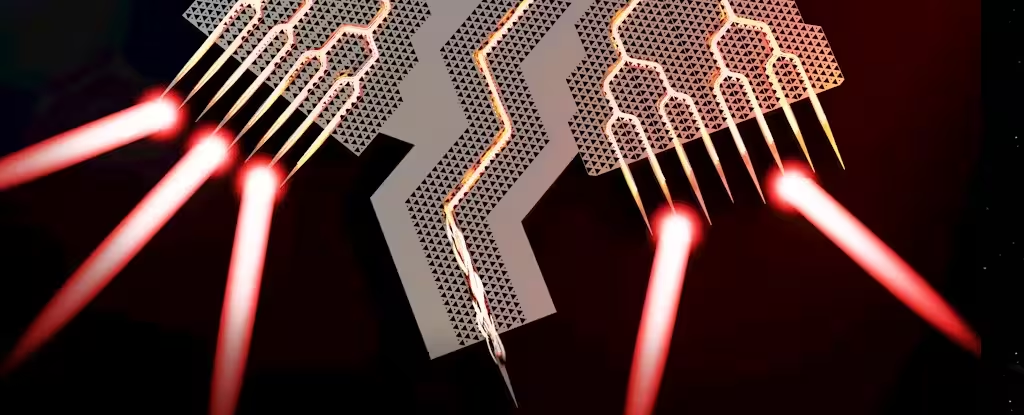Imagine a future where internet connectivity is not only lightning fast, but also extremely reliable, even in crowded places. This vision is rapidly becoming a reality thanks to new research into terahertz communication technologies. These innovations will change wireless communications, especially as communications technology moves toward next-generation networks (6G).
I am an engineer who focuses on photonics, or how light and other electromagnetic waves are generated and detected. In this work, my colleagues and I designed a silicon topological beamforming chip. Topological refers to the physical properties of silicon that help direct terahertz waves, while beamforming refers to the purpose of the chip: to convert terahertz waves into directional beams.
Terahertz frequencies are critical for 6G, which telecom companies plan to roll out around 2030. The radio frequency spectrum used by existing wireless networks is becoming increasingly congested.
Terahertz waves offer a solution by exploiting the relatively empty part of the electromagnetic spectrum between microwaves and infrared radiation. These high frequencies can transmit large amounts of data, making them ideal for data-intensive applications of the future.
Our chip takes a terahertz signal from a single source and splits it into 54 smaller pulses, which are then routed into 184 smaller channels with 134 sharp turns. Each beam can transmit and receive data at 40 to 72 gigabits per second, which is much faster than current 5G networks.
Using AI, we designed the chip to have a special microscopic honeycomb pattern that creates fringes for terahertz waves. The channel array sends out powerful, focused beams that cover the full 360 degrees around the chip.
This allows a phone or other wireless device to be located anywhere near a Wi-Fi router or other communications device that uses the chip to receive a high-speed signal. We demonstrated the chip by splitting an input HD video stream into four output beams.
Beamformers in wireless networks
Terahertz waves have a shorter range than the lower-frequency signals used in 4G and 5G networks. Terahertz beamformers solve this problem by precisely directing high-frequency signals so they reach their destination without loss or distortion.
Beamformers are essential for next-generation wireless communications.
Unlike traditional antennas that broadcast signals indiscriminately, beamformers focus signals in specific directions, improving both efficiency and reliability. Our chip enables these beams to provide omnidirectional coverage.
This targeted approach not only extends the range of the signal, but also improves its quality, even over long distances. Beamformers will be critical to managing stable connections by reducing interference as the world adds billions of connected devices.
The future of terahertz beamforming
The potential impact of terahertz beamforming chips on everyday life is profound. For example, they could allow you to download a 4K ultra-high-definition movie in seconds, compared to 11 minutes over modern Wi-Fi, or support immersive virtual and augmented reality experiences without any lag.
In addition to entertainment, they could make real-time holographic communication a reality, where people appear as lifelike holograms. Smart cities could use this technology to seamlessly coordinate traffic systems and respond to emergencies, while healthcare could benefit from remote operations, where doctors operate robotic instruments remotely.
The terahertz beamforming chip is a significant step toward faster and more reliable wireless communications by overcoming the challenges of high-frequency signal transmission.













